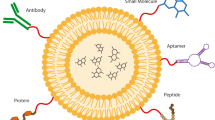Abstract
Both glial and neuronal cells maintained in primary culture were found to accumulate [3H]GABA by an efficient “high-affinity” uptake system (apparentK m=9 μM,V max=0.018 and 0.584 nmol/mg/min, respectively) which required sodium ions and was inhibited by 1 mM ouabain. Strychnine and parachloromercuriphenylsulfonate (pCS) (both at 1 mM) also strongly inhibited uptake of [3H]GABA, but metabolic inhibitors (2,4-dinitrophenol, potassium cyanide, and malonate) were without effect. Only three structural analogs of GABA (nipecotate, β-alanine, and 2,4-diaminobutyrate) inhibited uptake of [3H]GABA, while several other compounds with structural similarities to GABA (e.g. glycine,l-proline, and taurine) did not interact with the system. The kinetic studies indicated presence of a second uptake (K m=92 μM,V max=0.124 nmol/mg/min) in the primary cultures containing predominantly glioblasts. On the other hand, only one of the neuronal cell lines transformed by simian virus SV40 appeared to accumulate [3H]GABA against a concentration gradient. ApparentK m of this uptake was relatively high (819 μM), and it was only weakly inhibited by 1 mM ouabain and 1 mM pCS. The structural specificity also differed from that of the uptake observed in the primary cultures. Significantly, none of the nontransformed continuous cell lines of either tumoral (glioma, C6; neuroblastoma, Ml; MINN) or normal (NN; I6) origin actively accumulated [3H]GABA. It is suggested that for the neurochemical studies related to GABA and requiring homogeneous cell populations, the primary cultures offer a better experimental model than the continuous cell lines.
Similar content being viewed by others
References
Martin, D. L. 1976. Carrier mediated transport and removal of GABA from synaptic regions. Pages 347–386,in Roberts, E., Chase, T. N., andTower, D. B. (eds.), GABA in Nervous System Function, Kroc Foundation Series, Raven Press, New York.
Curtis, D. R., Game, C. J. A., andLodge, D. 1976. The in vivo inactivation of GABA and other inhibitory amino acids in the cat nervous system. Exp. Brain. Res. 25:413–428.
Lodge, D., Johnston, G. A. R., Curtis, D. R., andBrand, S. J. 1977. Effects of theAreca nut constituents arecaidine and guvacine on the action of GABA in the cat central nervous system. Brain Res., 136:513–522.
Schrier, B. K., andThompson, E. J. 1974. On the role of glial cells in the mammalian nervous system. J. Biol. Chem. 249:1769–1780.
Hutchison, H. T., Werbach, K., Vance, C., andHaber, B. 1974. Uptake of neurotransmitters by clonal lines of astrocytoma and neuroblastoma in culture. Transport of γ-aminobutyric acid. Brain Res. 66:265–274.
Ciesielski-Treska, J., Warter, S., andMandel, P. 1975. Morphological, histochemical and chromosomal patterns of neuroblastoma parental and purine resistant lines. Neurobiology 5:382–392.
Augusti-Tocco, G., andSato, G. 1969. Establishment of functional clonal lines of neurons from mouse neuroblastoma. Proc. Natl. Acad. Sci. U.S.A. 64:311–315.
Louis, J. C. 1978. Thèse de Doctorat en Médecine, Strasbourg, France.
Shein, H. M., Britva, A., Hess, H. H., andSelkoe, D. J. 1970. Isolation of hamster brain astroglia by in vitro cultivation and subcutaneous growth, and content of cerebroside, ganglioside, RNA and DNA. Brain Res. 19:497–501.
Benda, R., Lightbory, J., Sato, G., Levine, L., andSweet, M. 1968. Differentiated glial cell strain in tissue culture. Science 161:370–371.
Stefanovic, V., Ciesielski-Treska, J., Ebel, A., andMandel, P. 1976. Neuroblasts-glia interaction: The effect of co-cultivation upon ecto-ATPase activity of neuroblastoma and glioma cells. Exp. Cell. Res. 98:191–203.
Balcar, V. J., Borg, J., andMandel, P. 1977. High affinity uptake ofl-glutamate andl-aspartate by glial cells. J. Neurochem. 28:87–93.
Lowry, O. H., Rosebrough, N. J., Farr, A. L., andRandall, R. J. 1951. Protein measurement with the Folin phenol reagent. J. Biol. Chem. 193:265–275.
Iversen, L. L., andJohnston, G. A. R. 1971. GABA uptake in rat central nervous system: Comparison of uptake in slices and homogenates and the effects of some inhibitors. J. Neurochem. 18:1939–1950.
Johnston, G. A. R., Vitali, M. V., andAlexander, H. M. 1970. Regional and subcellular distribution studies on glycin 2-oxoglutarate transaminase activity in cat spinal cord. Brain Res. 20:361–367.
Snyder, S. H., andCoyle, J. T. 1969. Regional differences in [3H]norepinephrine and [3H]dopamine uptake into rat brain homogenates. J. Pharmacol. Exp. Ther. 165:78–86.
Iversen, L. L., Mitchell, J. F., andSrinivasan, V. 1971. The release of γ-aminobutyric acid during inhibition in the cat visual cortex. J. Physiol. 212:519–534.
Mandel, P., Ciesielski, L., andMaitre, M. 1977. Neural Inhibition, a Tool for Research of Anticonvulsants in Medicinal Chemistry V, Elsevier, Amsterdam, pp. 155–171.
Mandel, P., Ciesielski-Treska, J., andSensenbrenner, M. 1976. Neurons in vitro. Pages 11–157, inGispen, W. H. (ed.), Molecular and Functional Neurobiology, Elsevier, Amsterdam.
Schousboe, A., Hertz, L., andSvenneby, G. 1977. Uptake and metabolism of GABA in astrocytes cultured from dissociated mouse brain hemispheres. Neurochem. Res. 2:217–229.
Schon, F., andKelly, J. S. 1975. Selective uptake of [3H]β-alanine by glia: Association with the glial uptake system for GABA. Brain Res. 86:243–257.
Leach, M. J., Ridall, D. R., andWinkley, C. M. 1976. Uptake ofl-2,4-diamino[4-3H]butyric acid into slices of rat cerebral cortex. J. Neurochem. 27:1281–1282.
Levi, G., andRaiteri, M. 1978. Modulation of γ-aminobutyric acid transport in nerve endings: Role of extracellular γ-aminobutyric acid and of cationic fluxes. Proc. Natl. Acad. Sci. U.S.A. 75:2981–2985.
Sellström, A., Venema, R., andHenn, F. 1976. Functional assessment of GABA uptake or exchange by synaptosomal fractions. Nature 264:652–653.
Skou, J. C. 1965. Enzymatic basis for active transport of Na+ and K+ across cell membrane. Physiol. Rev. 45:596–617.
Johnston, G. A. R., andDavies, L. P. 1974. Postnatal changes in the high affinity uptake of glycine and GABA in the rat central nervous system. J. Neurochem. 22:101–105.
Cleland, W. W. 1967. The statistical analysis of enzyme kinetic data. Adv. Enzymol. 29:1–32.
Mulder, A. H., andSnyder, S. H. 1974. Potassium-induced release of amino acids from cerebral cortex and spinal cord slices of the rat. Brain Res. 76:297–308.
Author information
Authors and Affiliations
Rights and permissions
About this article
Cite this article
Balcar, V.J., Mark, J., Borg, J. et al. High-affinity uptake of γ-aminobutyric acid in cultured glial and neuronal cells. Neurochem Res 4, 339–354 (1979). https://doi.org/10.1007/BF00963804
Accepted:
Issue Date:
DOI: https://doi.org/10.1007/BF00963804




